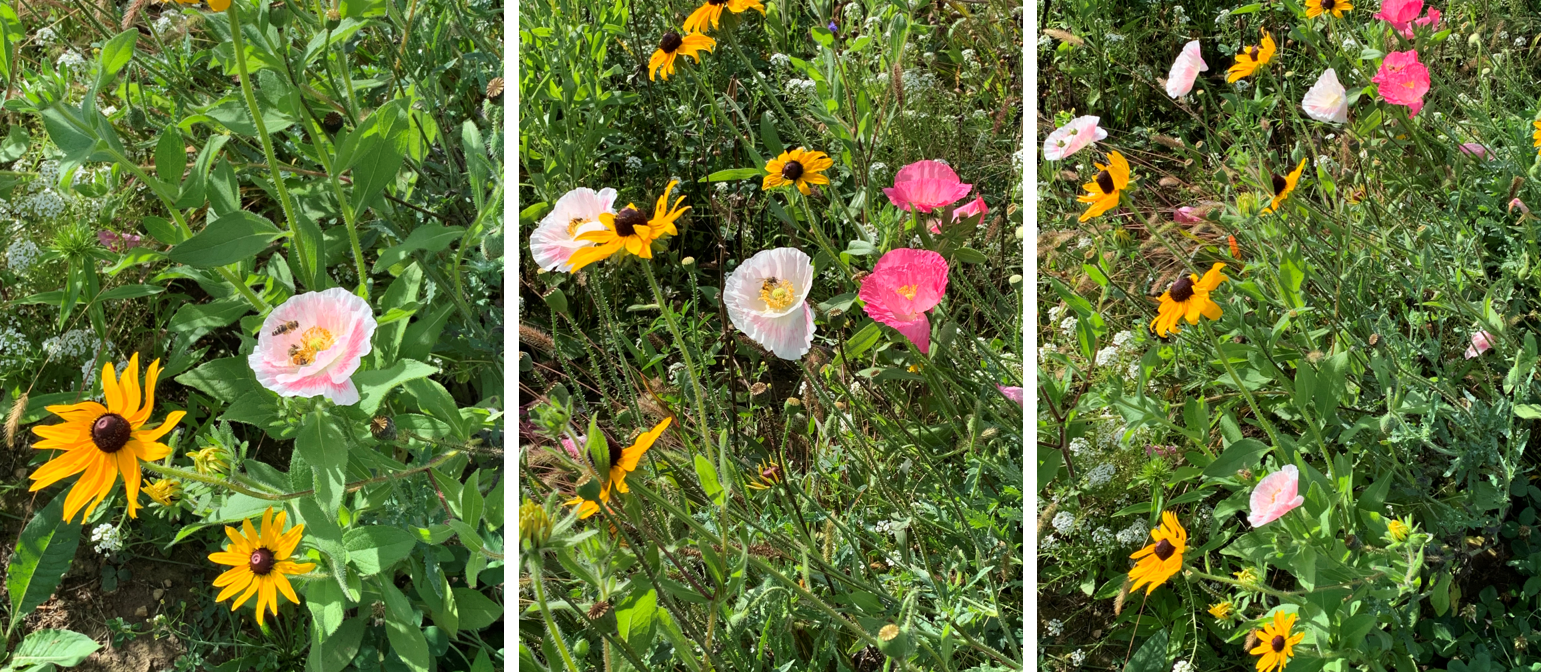An Environmental Approach to Land Conservation
In Eastern North America, there is a wide variety of native and naturalized vegetation to replicate.
Most planting objectives fall into the following categories:
- Erosion control and soil & water stabilization
- Beautification and enhancement of landscapes
- Biodiversity and wildlife habitat enhancement & restoration
- Pollinator habitat for honeybees and native pollinators
The use of environmentally friendly, native plants saves time and money reducing water, chemical, fertilizer and maintenance needs. Select a combination of species that creates the landscape desired. Your goals should be compatible with site conditions that cannot be altered. Native plant communities can be selected to meet all site conditions.
Upland & Meadow Sites
Upland sites are characterized as being dry the majority of the year. Soils at these sites often consist of sandy clay and shale with very little topsoil and are subject to drought.
Recommended Mixtures: Roadside Native Mix, Upland Mix, Native Grass Mix
Riparian Sites
Riparian sites are usually adjacent to rivers and waterways. Soils often contain clay, high amounts of organic matter and/or saturated sand.
Recommended Mixtures: Floodplain Mix, Riparian Buffer Mix
Disturbed Sites & Steep Slopes
Disturbed sites and steep slopes have variable soil types and conditions.
Recommended Mixtures: Quick Erosion Control Cover Mix, Native Steep Slope Mix
Wet Meadow & Wetland Sites
Wet Meadow & Wetland Sites have soils made up of clay and high organic matter, with high water tables or impervious layers that prevent drainage. They are wet most of the time.
Recommended Mixtures: Wetland Mix, Wet Meadow Mix
Storm Water Management Facility Sites
Storm water management facility sites are generally a best managementpractice integrated throughout land development projects, which provide for a volume of water storage, infiltration and evaporation that mimics the natural rate of runoff or groundwater recharge.
Recommended Mixtures: Retention Basin Floor Mix - Low Maintenance, Native Detention Area Mix
*All Native Seed Mixtures subject to availability*
Permanent Seed Mixtures
Standard Roadside Mix
Seeding Rate: 170 kg. / 10,000 m2
Contains:
Creeping Red Fescue
Kentucky Bluegrass
Perennial Ryegrass
White Clover
Salt Tolerant Mix
Seeding Rate: 170 kg. / 10,000 m2
Contains:
Tall Fescue
Fults Alkali Grass
Creeping Red Fescue
Perennial Ryegrass
Hard Fescue
Acidic Soil Mix
Seeding Rate: 170 kg. / 10,000 m2
Contains:
Birdsfoot Trefoil
Red Top
Tall Fescue
Creeping Red Fescue
Hard Fescue
Alsike Clover
Red Clover
Lowland Mix
Seeding Rate: 170 kg. / 10,000 m2
Contains:
Creeping Red Fescue
Bromegrass
Kentucky Bluegrass
Birdsfoot Trefoil
White Clover
Perennial Ryegrass
Grass Waterway Mixture
A long-term mix designed to hold the soil in waterways and embankments. Contains annual ryegrass for fast establishment, fescues for long-term root growth to hold the soil in place and alsike clover that can survive in wetter locations.
40% Creeping Red Fescue
30% Tall Fescue
10% Alsike Clover
20% Annual Ryegrass

Wildflower
Northern Region Wildflower Mixture
Northern Region Wildflower Mixture is a blend of annual and perennial wildflowers for establishing permanent flowerbeds and for areas where minimum maintenance ground cover is desired. When planted in the Spring, the mixture will establish and the annuals will flower throughout the first season leaving the perennials to continue blooming in subsequent years. Little maintenance is required to maintain a colourful stand. The application of 10 lbs. per 1,000 sq.ft. of 7-7-7- fertilizer each Spring and Summer watering will help to increase the bloom time and colour intensity of the planting. ** Please note: Fertilizer mixtures containing herbicide formulations must not be used or it will kill or seriously injure wildflower plantings. Residual effects of herbicide in the soil will also affect establishment of the wildflowers.**
As well, clipping the stand in mid-November at a height of 6-8 inches will help to reduce the amount of dead material present the following Spring.
The seedbed should be prepared as if planting a lawn before planting your wildflower seed mixture. The seed should be spread and mixed with the top 1/8 inch of soil with the backside of a rake. Be sure to spread the seed at shallow depths – do not plant too deeply as this may greatly reduce the density of the resulting stand. After planting the area, it should be packed with a light lawn roller to increase seed to soil contact to enhance germination.

